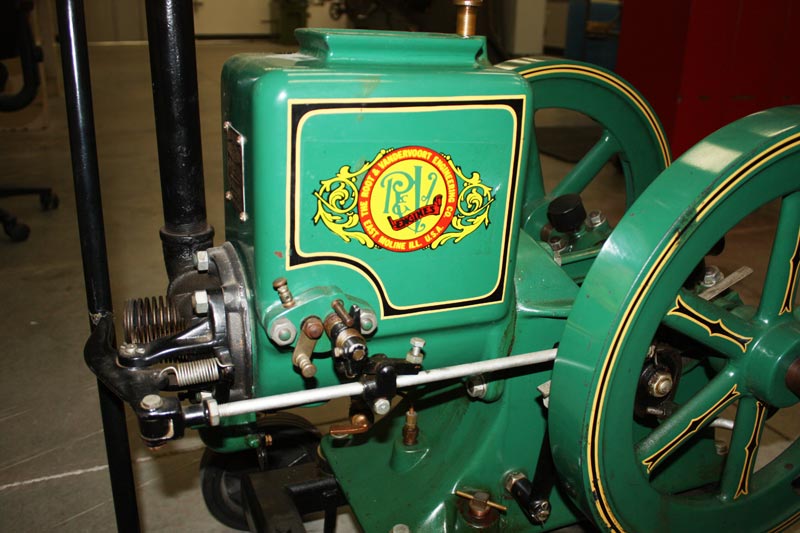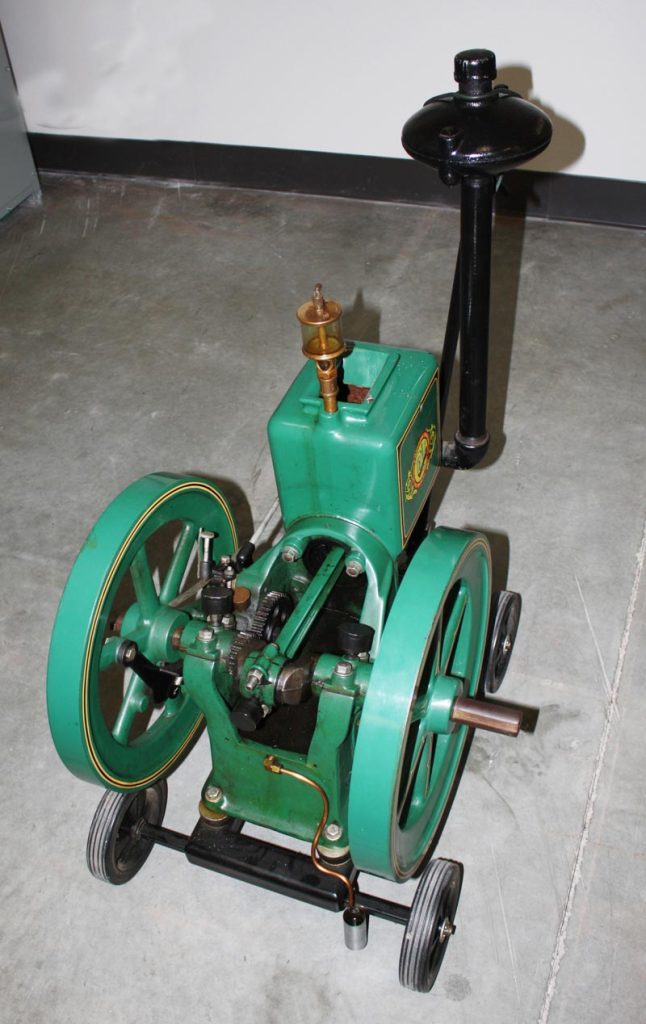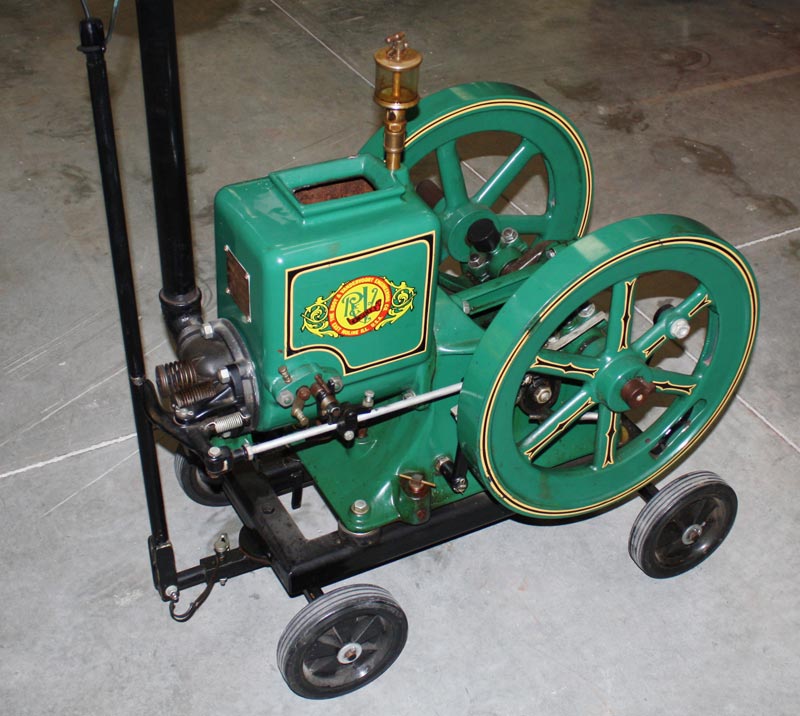This full-size Root & Vandervoort 2 HP hit n’ miss engine was restored by Bill Fowler and donated to the museum by Les Cade. The engine can run at 450 rpm, and the serial number is BL13371. Produced in 1911, this engine is typical of the farm workhorse engines used in the early part of the 20th century. It is a full-size engine, not a model. Electrical power for the ignition comes from a battery in a separate wooden box, and a wheeled stand was made for it to make it easy to move around.
The tag notes it was manufactured for the W.M. Gregory company in Los Angeles by Root & Vandervoort Engineering Co. of East Moline, Illinois. The founders of the company, William Humphrey VanDervoort and Orlando J Root, attended university together and formed a partnership producing farm machinery before they began making gasoline engines.
Root & Vandervoort made seven different types of gas engines. This one is a general utility model. These ranged from 1hp to 20hp. This model was most likely produced in 1911 which you can tell from the serial number and HP rating. As the serial number is BL13371, the “B” means that the engine is a 2hp, the “L” is the style (either L or R), and the first number is the year. This engine is also a part of the R&V “Triumph Line,” which was given to both L and R styles. Learn more about Root & Vandervoort engines here.
Hit n’ miss engines are so named because they do not necessarily fire on every stroke. A regulator usually uses centrifugal force to determine speed of the flywheel. Once it is spinning at greater than a given speed, the spark is cut off, causing the flywheel to slow down. Once it slows enough, the spark is restored, causing another ignition. When a load is put on the engine, it fires more often until, with enough load, it is firing on every stroke.
These engines would typically use a belt drive to turn a pump. At only 2 HP, this engine is quite small for the type. It is started by turning the large flywheel by means of a handle that folds out from the side of one of the flywheels. Read more about Bill Fowler.




